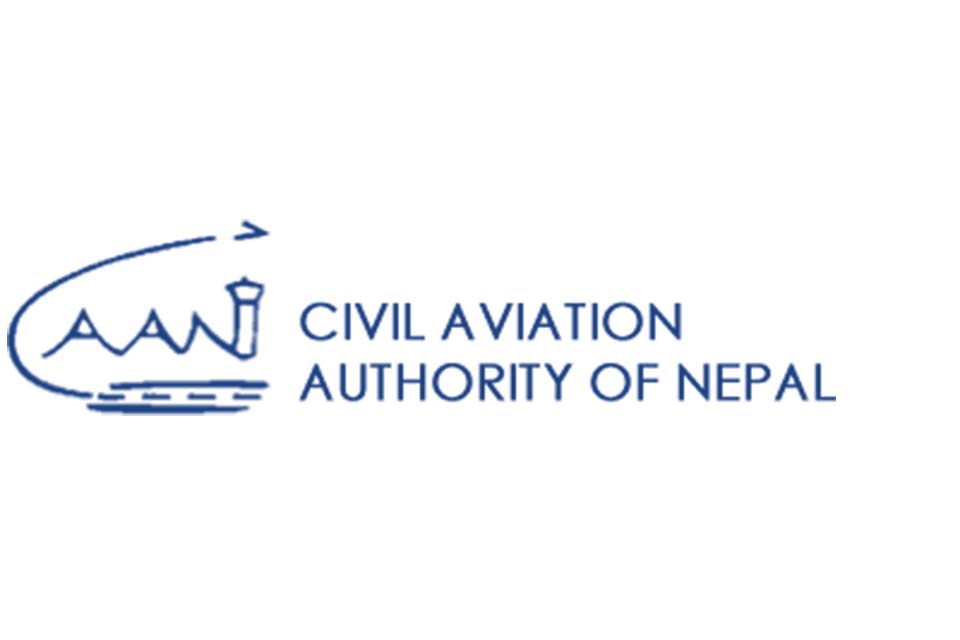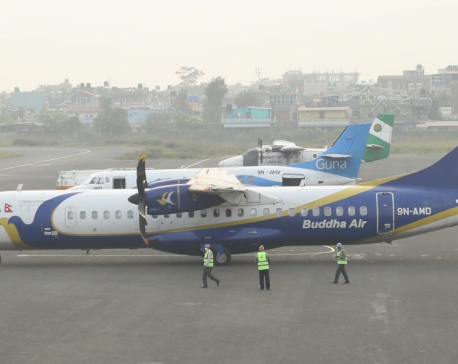
OR
CAAN tightens operation of flights on Pokhara-Jomsom route
Published On: June 15, 2022 10:20 AM NPT By: Santosh Pokharel

POKHARA, June 15: A Tara Air plane crashed in Mustang, during the Pokhara-Jomsom flight, two weeks ago. All the passengers and the crew members on board the plane died in the crash. Following the accident, the aviation regulatory body, the Civil Aviation Authority of Nepal (CAAN), decided not to provide permission to domestic flights to fly until the weather is clear.
All flights on the Pokhara-Jomsom route have been suspended following the decision of CAAN. Prior to the accident, only private sector Tara and Summit Air had been flying on this route. According to CAAN, no flight will be allowed to operate unless the weather at ‘inroot’ (airport where the aircraft takes off and lands) is clear. A station manager of a Pokhara-based private company said that all flights from Pokhara to Jomsom were canceled due to the lack of information on 'inroot' weather.
Prior to the May crash, Tara and Summit Airlines used to fly five and two flights respectively, flying up to 10 times a day. “This is the season for Indian tourists and arrivals are also high at present. However, flights have not been operated due to the lack of clear weather,” said the station manager.
"There used to be problems on the Pokhara-Jomsom route during June-July. But now the authority itself has stopped the operation of flights, which has adversely affected tourism,” he said. “Similarly, no one has information about the ‘inroot’ due to which flights are not operated even when the weather is good.” According to him, five flights have been operated since June 4 after Tara’s accident.
CAAN Deputy Director General Deuchandra Lal Karna said that the flights are not allowed to operate until the ‘inroot’ weather is clear. According to him, the weather at both the flying and landing airports should be clear during the VFR flight.
Karna said that the airports should be visible from at least 5 kilometers of distance and the captain should be able to see the distance up to 8 kilometers from the cockpit. “This rule imposed by the authority is old and the important thing is that the plane should not enter inside the cloud,” he said, “Basically, this is an old rule, it’s just that the rule should be strictly followed from now onward.”
"The airports from which flights will take off should make sure that the inroot weather is clear. Also, the airport where the plane lands should inform the pilot about the weather,” he said.
Take off airports should send planes only after making sure that the inroot weather is clear, and the landing airports should call if there is no problem," he said. “Along with the pilot, we are making the airport responsible too.”
According to him, the Department of Hydrology and Meteorology has been appointed as the body to provide information about the inroot weather to the airport. Karna said that the department will provide weather information to the airport and on the same basis the airport will allow the operation of the flight.
You May Like This

Domestic flights not allowed to operate flights unless weather is clear at destination airport
KATHMANDU, June 1: The Civil Aviation Authority of Nepal (CAAN) has decided not to allow domestic flights to operate if... Read More...

Yeti Airlines adds new ATR aircraft in its fleet
KATHMANDU, April 29: Yeti Airlines has inducted a new ATR 72-500 aircraft in its fleet. ... Read More...

CAAN draws flak for its decision to distribute bonus
KATHMANDU, Jan 13: The decision of Civil Aviation Authority of Nepal (CAAN) to distribute bonus to its staffers has drawn flak... Read More...










Just In
- NRB introduces cautiously flexible measures to address ongoing slowdown in various economic sectors
- Forced Covid-19 cremations: is it too late for redemption?
- NRB to provide collateral-free loans to foreign employment seekers
- NEB to publish Grade 12 results next week
- Body handover begins; Relatives remain dissatisfied with insurance, compensation amount
- NC defers its plan to join Koshi govt
- NRB to review microfinance loan interest rate
- 134 dead in floods and landslides since onset of monsoon this year








Leave A Comment